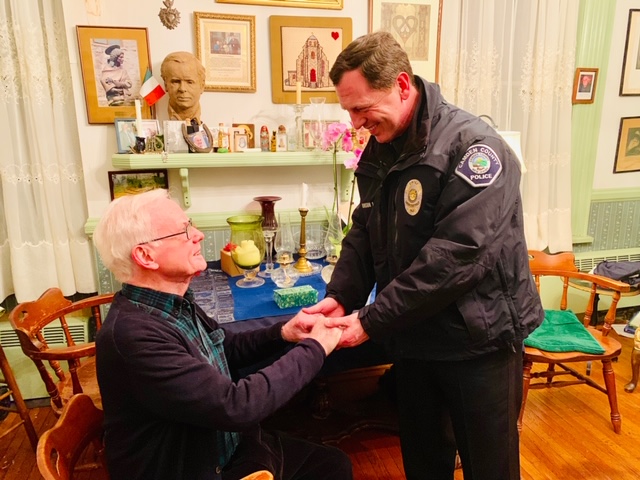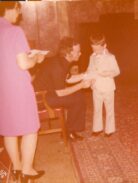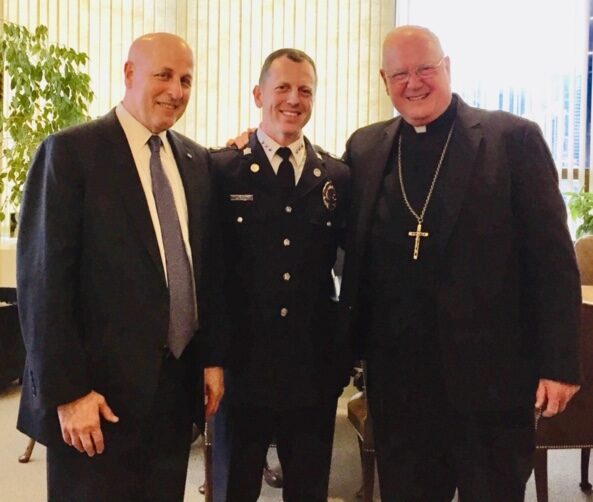
MANHATTAN — In 2012, Camden, N.J. had one of the nation’s highest murder rates but despite that, some residents still saw the police department as incompetent, corrupt, and not to be trusted.
One year later, J. Scott Thomson, then the city’s police chief, held tight to his Catholic faith as he presided over the unconventional scrapping of his department and replacing it with one operated by Camden County.
The move enabled Thomson, a Camden-area native, to ditch the rules and binding arbitration rulings that kept him from holding his own cops accountable.
Thomson, who was made chief of the county department, then launched a community policing strategy — instead of kicking in doors, officers politely knocked on doors, not to arrest, but to introduce themselves. Trust and communication improved; crime rates fell.
The Camden model has been getting media attention this summer, concurrent with a renewed national clamor for police reforms after the in-custody death of George Floyd in Minneapolis.
However, Thomson is quick to correct those who say Camden is an example of how to “defund the police.”
“What we achieved in Camden was all rooted in fundamentals,” Thomson told The Tablet. “Those being that you treat people with respect and dignity, and that you can only build trust through enhanced communications.”

Thomson said he wanted no part of the turmoil, which conflicted with his upbringing in a devout Catholic family.
Thomson was 9 years old when his father died. His widowed mother, Donna, raised him and his older sister, but faith grounded them.
Thomson said his mother, who before marriage considered being a nun, taught him that acts of kindness spread the Gospel better than words, advice he followed while confronting crime.
Police work, Thomson said, became his ministry. “I was more interested in being a protector than an enforcer,” he said. “I carried that through my career.”
Thomson rose through the ranks and became chief in 2008. He said, however, that old-guard commanders obsessed over shortened response times and numbers of arrests.
There was no actual crime prevention through positive community interactions, Thomson said.
The city’s 2012 murder rate spiked — there were 67 murders according to FBI data — and was 18 times higher than the national average. Camden was ranked as the most dangerous city in the U.S., the former chief said.
A year later, Thomson dismantled the department. The move was favored by city officials — and urged by then-Gov. Chris Christie — who agreed the existing police union contract made patrolling the streets unaffordable.
Today, Thomson explains, the new department is funded by the state of New Jersey, which allocates money to the city, which then pays the county.
Thomson hired back some of the unemployed city officers but with less pay and new standards rooted in community policing.

They also got new marching orders: engage people in crime-ridden neighborhoods; earn their trust; motivate them to share information.
In 2018, six years after the spike of 67 murders, Camden had only 23, FBI data shows.
Thomson noted that a few officers resisted the changes, “and my job became expediting their exoduses.”
Hard feelings lingered but Thomson said he refused to “sacrifice our ministry” by constantly having to “manage the bad behavior of cops who just didn’t get it.”
The changes impressed leaders in the Diocese of Camden, including Bishop Dennis Sullivan.
He said Monday that the officers’ new efforts “ensured that the department remained committed to reducing local violence,” while also “doing their part to support the Catholic mission of protecting the vulnerable and cultivating peace.”
“This strategy was enacted in a way that also strengthened the city residents’ own ability to participate in that work,” Bishop Sullivan said. He added that the marching orders also “embodied Pope Francis’ call to be a missionary disciple, to go to the people and accompany them.”
Many question if Camden’s approach could work elsewhere.
Take, for example, the New York City Police Department — the largest in the U.S. with 36,000 uniformed cops, almost half of the city of Camden’s population. Since the early 1990s, it has achieved massive cuts in crime through “broken windows” policy, a theory that believes targeting minor offenses, like vandalism, to boost law and order ultimately deters violent crime.
Joseph Esposito of Brooklyn, a retired NYPD commander, praised community policing as one of several necessary tools. He included the controversial “stop-and-frisk” program, which targeted illegal gun possession but was dropped following complaints of police harassment.
“Now, was there an overuse of those tools? I’m sure some officers did,” said Esposito, also the city’s former Commissioner Of Emergency Management. “But, that’s how we got guns off the street. You can’t throw the baby out with the bathwater.”
NYPD Commissioner Dermot Shea said Monday that a new NYPD strategy would shift officers “to areas experiencing upticks in shootings.” Also, officers will enlist community partners to hold “Stop the Violence anti-gun town hall events” throughout the city, Shea said.
Year to date, through the first weekend of August 2020, there were 793 shooting incidents citywide with 961 victims, according to NYPD data released Monday.
By comparison, police counted 450 shootings and 531 victims for the same stretch of 2019.
And last month alone, police recorded 244 shootings incidents citywide, compared to the 88 shootings that made the books in July 2019, the latest NYPD data shows.
July’s violence included a Brooklyn shooting that killed a 1-year-old boy.
Brooklyn Borough President Eric Adams, a retired NYPD captain, on Monday said he wants the department to revive the Anti-Crime Unit which deployed plainclothes officers who targeted illegal guns. Unit members, however, were reassigned in the wake of national protests over Floyd’s death in Minneapolis.
Adams explained Monday that the city received complaints that “some officers” didn’t clearly identify themselves as NYPD officers.
But, he added, the teams could return with better supervision and communication skills training. He said uniformed officers should stand ready nearby to join the plainclothes officers during stops to ensure the public knows it’s the NYPD on scene.
Adams also called for a tri-state task force to choke the flow of illegal guns into the city.
“Think about the fact that we had, over the July 4 weekend, 101 people shot,” Adams said. “If a terrorist entered our city and shot 101 people, the response would be appropriate, yet we have not matched that level of violence.”
Therefore, Adams said he’s calling on the governors of New York, New Jersey, and Connecticut to agree to a task force to block illegal guns from entering the city over bridges or through bus terminals.
Back in Camden, Thomson said, “The problem with community policing is there are 18,000 police departments in the country and, thus, 18,000 versions of what that means.
“But it can’t be a small-unit goal. It has to be the philosophy of the entire organization, from the police chief all the way down to the newest recruit.”
Thomson also stressed celebrating progress but not declaring victory.
“Camden is still vexed with poverty, unemployment, addiction, and broken homes,” he said, “but it is a far-less-violent city.
“So we do celebrate a community’s ability to reclaim its neighborhoods because what that equates to is fewer mothers each year burying their children.”
